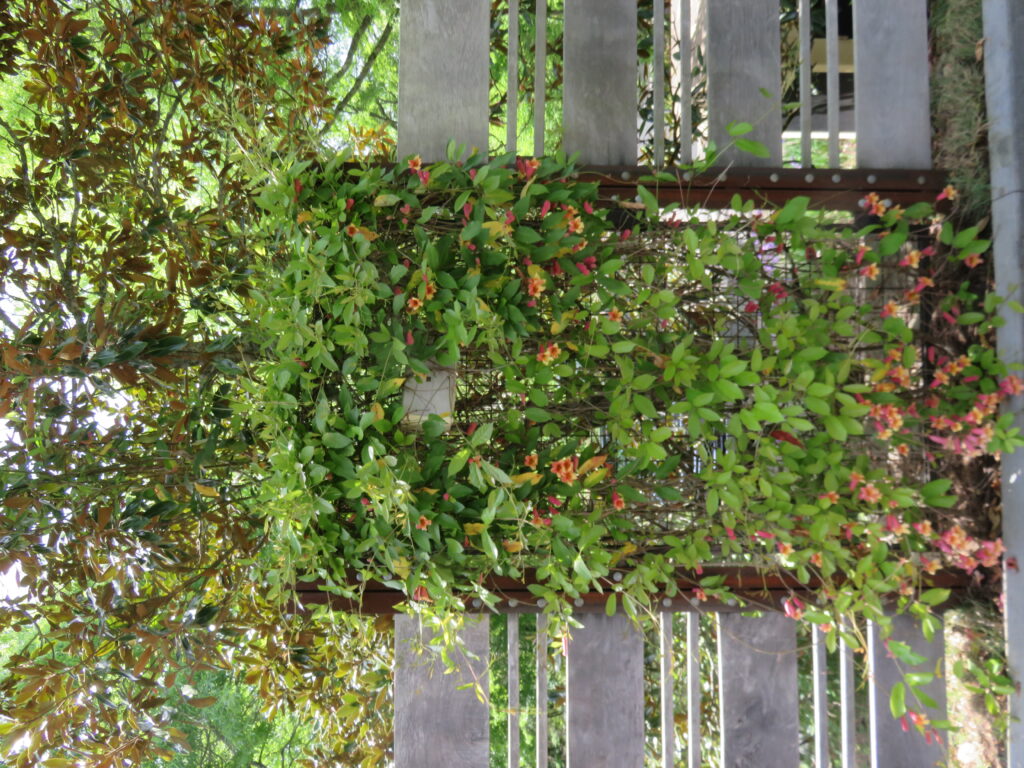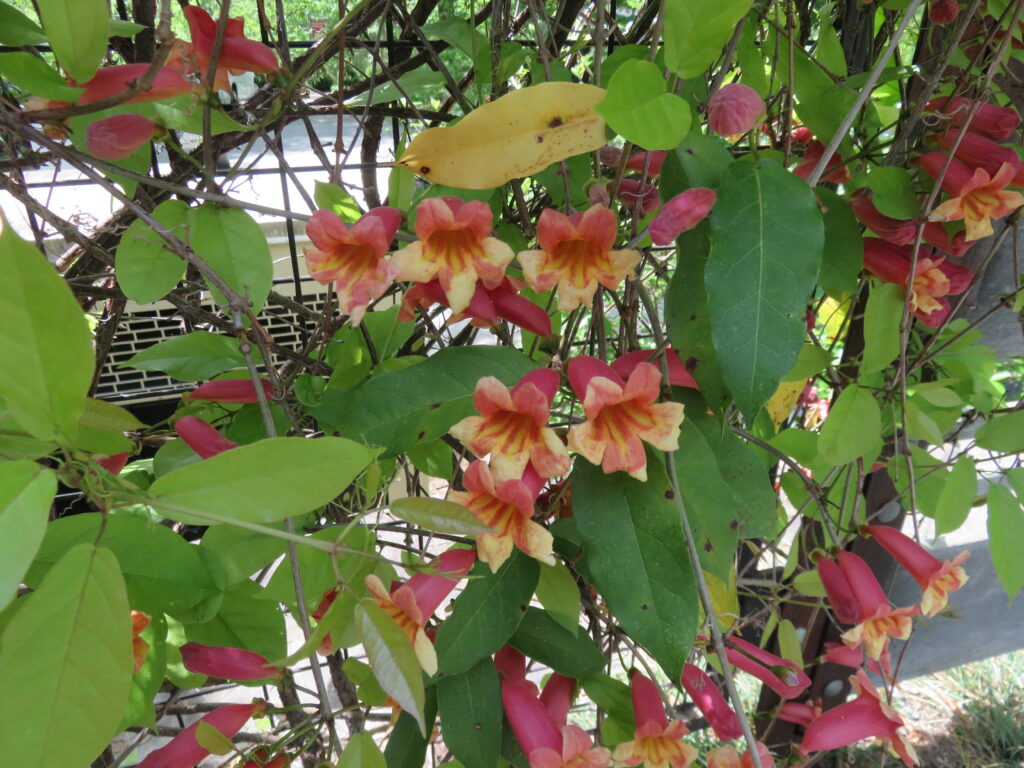
Crossvine (Bignonia capreolata) is a heavy flowering, vigorously growing vine in the Bignoniaceae (trumpet creeper) botanical family. It is native to the Southeastern and South-Central states including Texas. Once established, this vine stretches 30 to 50 feet high and spreads from 6 – 9 feet wide. A cross section of its stem reveals a marking resembling the Greek cross, hence the common name.
Opposite, compound leaves are bifoliate. Each leaf consists of a pair of lanceolate to oblong dark green leaflets (to 6” long) and a branched tendril between them. Foliage remains evergreen in the South but turns reddish-purple in fall with subsequent leaf drop in the colder winter areas of its range. (USDA hardiness zones 5-9)
This vigorous, self-clinging vine climbs by branched tendrils with adhesive disks that easily attaches itself to almost any surface. It is grown primarily for its attractive flowers and its ability to rapidly cover structures with attractive foliage.
In the wild, it grows in many soil types, including in swampy forests and woodlands. Crossvine will grow well in shade to full sun, with better flower production the more sunlight it receives. Once established, it is drought tolerant. In severe winters, the vine may die to the ground, but the roots are usually hardy enough to survive and will sprout new growth the following spring. Crossvine may be propagated by root cutting or seed.
The showy orange-red, yellow or orange flowers form as axillary clusters and last up to four weeks. Flowers are 2 inches long and 1-1/2 inches wide and hang in clusters of two to five. The vine starts blooming in late winter to early spring on new wood in clusters of 2 – 5 flowers. Often, some repeat bloom happens at any time over the growing season. Its early bloom season invite hummingbirds into the garden.

There are several cultivars: ‘Jekyll’ (bright orange flowers), ‘Tangerine Beauty’ (tangerine-colored blooms), ‘Helen Fredel’ (2-inch orange flowers / yellow throats), ‘Shalimar Red’ (coral – red flowers). Plant it nearby a large tree and tendrils will grab the bark and climb, later using roots to tighten its hold. Crossvine will also climb fences, walls, trellises, and other vertical structures without support.
No major diseases and insects trouble crossvine. Crossvine may become a maintenance headache. It spreads both by seed and by root suckers. Suckers should be pulled up when spotted. Crossvine is not considered to be invasive compared to its overly aggressive native cousin trumpet vine (Campsis radicans).
Fire Risk: rated extreme flammability and should not be planted near your home and other structures.

 Posted in
Posted in 
